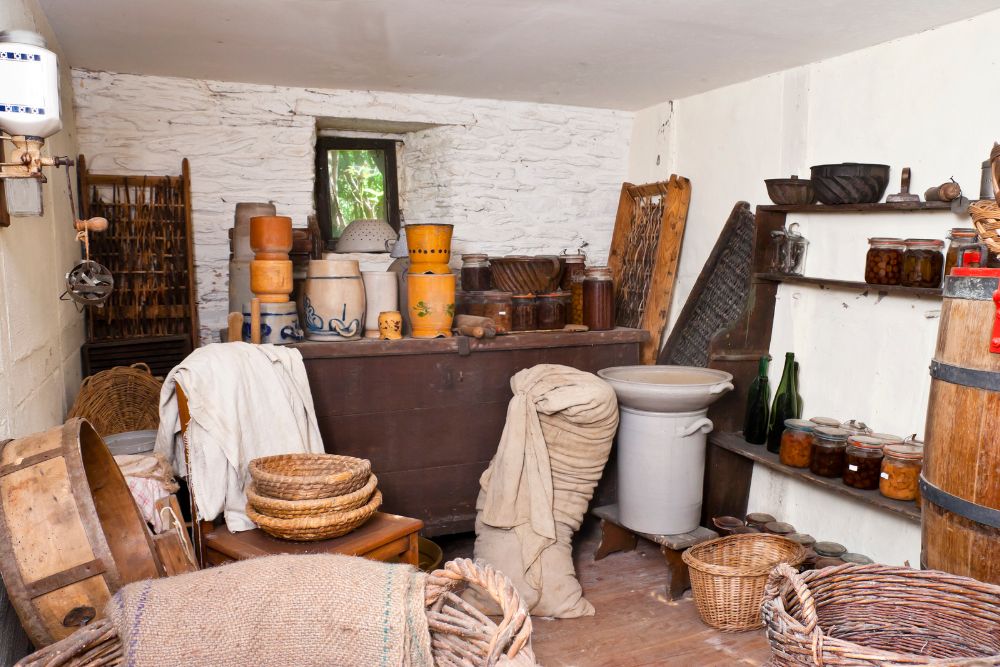In a world of uncertain times, it is important to be prepared for the worst. Building a survival cache can help ensure you and your family have what they need in an emergency. Survival caches are easily built and require little effort but offer great rewards when disaster strikes. With minimal supplies and some basic knowledge on how to store them correctly, anyone can build their own survival cache that will last for years.
Survival caches provide essential items like food, water, medicine, and tools in a safe storage facility away from prying eyes or danger. Knowing where and how to properly store these resources can make all the difference in surviving difficult situations. The best way to keep your supplies secure is with proper packing methods that guard against extreme temperatures, humidity levels, and pests. Additionally, learning how to strategically place items within the cache helps maximize its effectiveness while ensuring each item remains safely tucked away until needed most.
Building a survival cache doesn’t have to be complicated or expensive; with just a few simple steps, you can rest assured knowing you’re ready for any situation life throws at you! Keep reading this article to learn exactly how to set up and maintain your very own survival cache so you’re always prepared for whatever may come.
What Is A Survival Cache?
Have you ever considered taking proactive steps to ensure your safety in the event of an emergency or disaster? A survival cache is a great way to do just that. It’s essentially long-term storage for vital supplies, also known as prepper stockpiles. Having these items on hand will give you peace of mind and help you remain prepared should anything happen.
A survival cache can mean different things depending on each individual’s needs and budget. Generally speaking, though, it includes basics such as food, water, tools, medical supplies, and any other item that may be necessary for either short-term or long-term emergency preparedness. Depending on where you live, it could even include items like blankets, flashlights, and matches since some locations experience extreme weather conditions at certain times of the year.
Ultimately, having a survival cache means being better equipped to handle whatever life throws at you – and gives you the power to take action without floundering around during a time of crisis. With this knowledge in mind, let’s look into determining what supplies are best suited for storing away in your own personal stockpile!
Determining What Supplies To Store
Now that you understand the importance of a survival cache, it’s time to determine what supplies should be stored in order for it to be successful. Start by considering which essential items are needed for long-term survival: food and water being at the top of the list.
When stocking up on food, choose non-perishable items such as canned goods, freeze-dried or dehydrated meals, grains, and nuts. Consider foods with high calories and a long shelf life. Make sure all containers are properly sealed before storage, so bugs don’t infiltrate them. It is also important to rotate through your supplies every few months, so they remain consumable over an extended period of time.
In addition to food, emergency tools can prove quite useful during times of crisis. Flashlights, batteries, matches/lighters, first aid kits, multi-tools, and fire starters can help get you off the ground if disaster strikes. Be mindful when investing in these items – quality matters!
Storing water is another key component of survival caches; however, this requires more attention due to its limited shelf life. Invest in large plastic barrels (55 gal) and fill them with clean water from a reliable source like purified bottled water or tap water filtered using reverse osmosis systems or carbon filters. Store multiple barrels away from direct sunlight or extreme temperatures for optimal safety and efficacy when needed most.
With an understanding of necessary survival items secured in mind, along with proper methods for storing food and water, now comes the task of finding the best locations for storing supplies.
Best Locations For Storing Supplies
Finding the perfect spot for your survival cache is like a treasure hunt, you need to seek out the ideal locations that provide maximum security and long-term storage. Here are four essential tips when choosing a place for your supplies:
- Ease of Access: Make sure it’s easy enough to get into if needed while still being hard to find by others.
- Protection from Natural Elements: Look for places that offer some kind of protection from rain, snow, or extreme temperatures, so your items stay safe and dry in any climate.
- Discreetness: The chosen area should be discreet enough that people don’t suspect anything nor stumble upon it accidentally.
- Security: Selecting a secure location with multiple layers of defense can help deter thieves and other intruders from getting their hands on your valuable resources.
Wherever you choose to stash away your survival cache, make sure it meets all these criteria for effective long-term storage without compromising safety or accessibility. With careful planning and strategic placement, you can ensure that your supplies remain hidden and protected throughout whatever may come!
How To Securely Store Supplies Long-Term
When building a survival cache, it is important to store supplies for the long term in secure containers. This will help keep items safe from the elements and prevent them from being stolen or damaged. To ensure that food storage stays dry and cool, choose waterproof containers with tight seals. It’s also advisable to use plastic bins instead of cardboard boxes as they are more durable and less likely to be destroyed by moisture or pests.
To further protect your supplies from potential damage, it may be beneficial to put each item into resealable bags before storing them away. This will minimize air contact and help keep items fresh for longer periods of time. Additionally, consider using an insect repellent inside the container to ward off any unwanted critters that might try to get in. Finally, make sure all your supplies are clearly labeled so you can easily locate what you need when needed. By following these steps, you can ensure that your survival cache remains well stocked and ready for whatever comes your way.
Maintenance Tips For Keeping Supplies In Good Condition
Keeping a supply of supplies in good condition is essential for maintaining a survival cache. Long-term storage tips can help preserve items and ensure their usability when needed. One important tip is to regularly check the inventory and stock up on any necessary items that need replacing or replenishing. This helps keep the stockpile fresh and prevents it from becoming outdated.
Another maintenance tip is to rotate through items, using those that are closest to expiration first and making sure not to let them sit too long before use or replacement. Keeping track of expiration dates will also make it easier to determine which items should be used sooner rather than later. Properly storing goods according to manufacturer guidelines will also extend shelf life and protect against damage caused by extreme temperatures, pests, and other environmental factors.
Finally, taking steps like sealing off containers with lids or shrink wrap can provide an extra layer of protection against moisture, mildew, and excessive air exposure. Additionally, ensuring there’s enough space between stored goods makes it easier to access what you need while minimizing potential damage due to overcrowding or stacking too high. By following these simple stocking inventory advice and preserving supplies guidance, you’ll be well prepared with a supply of usable items when they’re most needed.
In Conclusion
Storing supplies in a survival cache can be an effective way to ensure that you have the essentials if disaster strikes. You need to take into consideration what items are best for your particular situation and where it is most advantageous to store them. Once you’ve determined those two factors, make sure they’re stored securely, so they remain safe over the long term.
Regularly checking on and maintaining these items will help keep them in good condition when you need them most. Preparing a survival cache now allows us to feel more secure in knowing we’ll have access to important resources when facing unexpected hardships down the road.

